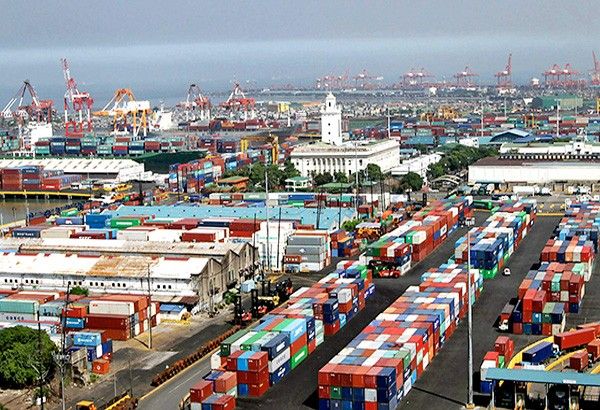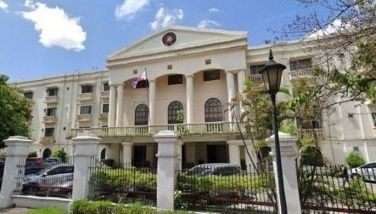Port congestion delays unloading of imported rice

MANILA, Philippines — Consumers have to endure the high prices of rice until end-September due to tight supply until now, which is only good for 45 days when it is supposed to last for 90 days.
This continues to prompt the government to prioritize and fast-track the unloading of imports.
But Agriculture Secretary Emmanuel Piñol maintained there is no rice shortage, only tightness in supply even if the national inventory has significantly dropped compared to its supposed level.
Piñol met with rice industry stakeholders and told reporters on Monday that “imported rice continue to arrive but cannot be unloaded due to port congestion.?
“One of the measures that we are recommending is to prioritize the unloading of all rice imports because further delay in the unloading would result in payment of penalties which would eventually be passed on to consumers,” he added.
The DA and state-run National Food Authority, Piñol said, are coming up with a system of specific schedules on the arrival of imports as a long-term measure to avoid a similar situation from happening again.
No congestion in state-run ports
The Philippine Ports Authority (PPA) and the Bureau of Customs (BOC) denied congestion in government-run ports, South Harbor and the Manila International Container Port (MICP).
However, a PPA source explained that the delayed release of rice shipments might have been caused by the long queues at the private port, such as the Harbour Centre Port Terminal Inc. over which the PPA has no control.
The source said the NFA rice shipments are bidded out. The winning bidders, oftentimes an international shipping company, decide where to unload their rice cargoes.
“Many of them would choose the private port Harbour Centre since it offers lower rates, by about 50 percent,” the source said.
On the side of the BOC, the agency’s spokesperson Erastus Sandino Austria said there is no port congestion in the MICP or South Harbor, which is also called the Port of Manila.
He explained there are international standards to determine if there exists a port congestion such as that yard utilization has reached 70 to 80 percent that will restrict the movements inside the container yard, and it will take several days for a shipment to be released.
He also said that the government is well aware of the need to hasten the release of rice shipments. “If all the documents are present, the shipment can be released in a couple of hours.”
“As far as the Customs clearance is concerned on rice shipment and any other commodity, they proceed with full speed for as long as there is no problem (with their documents), especially when it comes to rice. There is a marching order from President Duterte and Customs Commissioner Isidro Lapeña to expedite its clearance so there would be no shortage of rice in the market,” Austria added.
Another possible cause of delay in the release of shipment is the weather condition. If it rains, the rice shipment will not be unloaded from the ship because the product can be ruined. The ship may also get damaged if rough seas cause it to ram against the pier.
No price increases
And while rice prices in the market will not decrease anytime soon, rice millers have assurance that there will be no further increase in the next few weeks.
“We have not increased in the wholesale for the last two weeks. Any movements in prices are already because of the retailers,” Isabela Rice Millers Association president Ernesto Subia said.
He added that prices – in the wholesale level at least – will start to stabilize by end-September until the rest of the year and can decrease by as much as P3 per kilogram by end of next month.
“But with the retailers, we cannot say as to when or how much they will bring down the prices. We no longer have control on that,” Subia said.
Latest data showed that as of this week, regular milled rice is at P40 per kilogram, lower than the P42 per kg last week due to the suggested retail price implementation but still higher than the P37 per kg price during the same period last year.
Well-milled rice, premium rice, and fancy rice are also higher at P43, P48 and P55 per kg.
The agriculture chief said stakeholders denied hoarding stocks because now is the best time to sell their produce given the good farm gate prices, which reached an all-time high of P29 per kg.
While it will take a few more weeks before prices start to stabilize, Piñol admitted that the department can only do so much to cushion the impacts.
“Let us also look at the other side of the coin because our farmers are rejoicing due to the unprecedented price of palay for the first time,” he said.
“There is nothing much we can do but to assure the consumers that we will strengthen our price monitoring. But we also iterate that problem is not in the production but in the retail market price,” Piñol added.
- Latest
- Trending





























